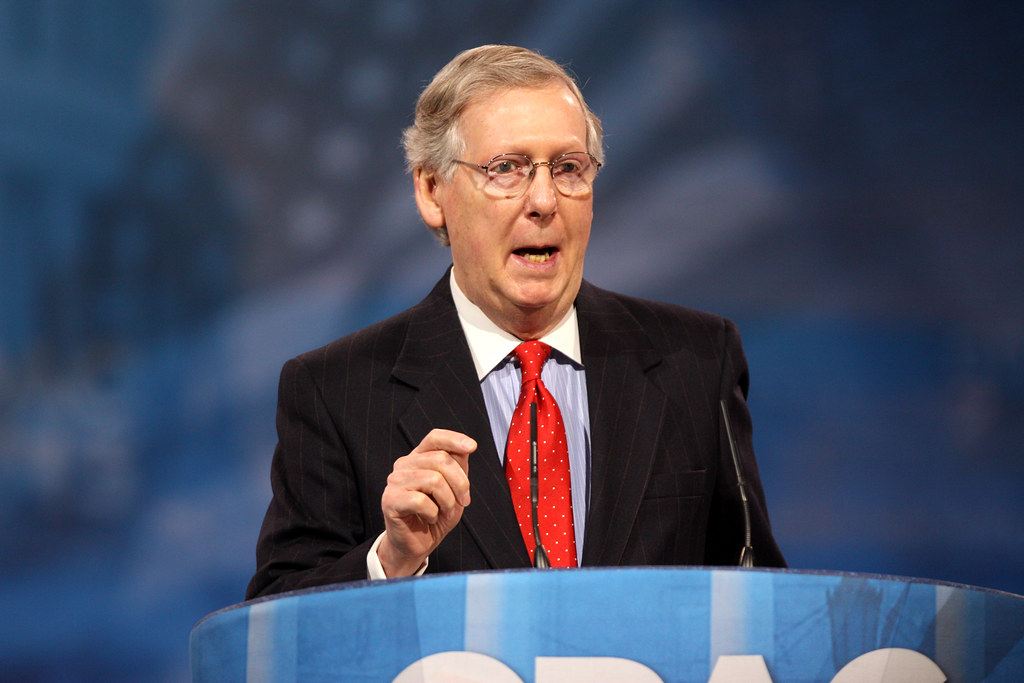President Biden released the Budget of the United States this week, directly on his State of the Union address last week. The Budget has been a presidential responsibility since 1921, when Congress essentially threw up its collective hands and delegated it to President Warren G. Harding in the Budget Act. Presidents got a significant staffing upgrade relative to this task in 1970, when another Budget Act created the Office of Management and Budget directly responsible to the chief executive.
This edition of the budget is for fiscal year 2025, which begins this coming October 1. It comes somewhat later in the calendar than usual, but otherwise is pretty typical for a budget. It's mostly a continuation of past government financing, with some policy recommendations that would if adopted have some impact on the bottom line numbers. It has no policy authority of its own; actual government financing requires appropriations by Congress, which given its divided and polarized condition tends even more towards the incremental. Still, it's as good a statement as any of the financial shape and direction of the U.S.
Biden's budget projects a country returning to normal over its 10-year time perspective, following the dislocations of the coronavirus pandemic shutdowns--dislocations that were profound but seem to have been mercifully short-lived. Real GDP growth is expected to be in the low 2 percents through fiscal 2034 (Table S-9, p. 173). (It is a real temptation for presidents to forecast exceptional economic growth, because it makes the bottom line look better. Trump did this; Biden hasn't, to his credit.) Inflation is projected to be down to 2.3 percent in 2025 and in the low 2 percents after that. Entitlement ("mandatory") spending is predicted to be stable at 15-16 percent of gross domestic product, with interest payments rising to 3.5 percent of GDP over this period (Table S-5, p. 142).
Government revenues have averaged about 18 percent of GDP since the 1970s, though they dropped sharply during the 2008-10 recession and the pandemic. FY25 revenues are estimated to be 18.7 percent, with gradual rises after that to 20+ percent beginning in FY31 (Table S-1, p. 137). Biden proposes tax increases on "the wealthiest Americans and big corporations" totaling $5 trillion over this period, not to mention allowing most of the 2017 tax cuts to expire when they sunset in 2025.
Government spending has averaged about 21 percent of GDP since the 1970s, running higher during the recession and then surging over 30 percent at the height of the pandemic. FY25 spending is estimated at 24.8 percent, remaining between 24 and 25 percent for the rest of the period (Table S-1, p. 137). It will top $7 trillion for the first time, and reaching $10 trillion in FY33--consistent with growth in the size of the economy, but staggering numbers for someone who remembers Jimmy Carter getting static for proposing the first $500 billion budget. (Now the defense budget alone is more than half-again larger!) There are a few new spending programs included, such as "investments" in health care and expanding access to child care and early childhood education. More notably, the budget projects no cuts in Social Security or Medicare, the two largest and fastest-growing government programs, and declining demands on the defense budget.
The FY25 budget projects a FY25 deficit of $1.781 trillion, 6.1 percent of GDP, optimistically assuming adoption of his proposals and seemingly peace in the Middle East and Ukraine. Otherwise the deficit remains over 5 percent of GDP (Table S-2, p. 138), or gets higher if the 2017 tax cuts are extended. I understand that you don't want to be so aggressive about the deficit that you blow up the economy, and that none of the most-feared negative effects--crowding the private sector out of lending markets, vulnerability in a crisis, vulnerability to international creditors--has come to pass after 40 years of high borrowing.
But neither am I sanguine about our financial future. Maybe I'm too Newtonian but the lack of urgency shown by either party when they're in power seems less than resilient. But on the other hand, is rationalizing the budget more urgent than cleaning up forever chemicals or burying interstates or getting the health insurance system on a sound footing?
SEE ALSO:
James Capretta, "The Biden Administration's 2025 Budget," AEIdeas, 12 March 2024
Anna Malinovskaya and Louise Sheiner, "The Hutchins Center Explains: Federal Budget Basics," Brookings Institution, 13 December 2018 [lots of good if out-of-date charts here]
Michael E. O'Hanlon and Alejandra Rocha, "What's in Biden's $850-Billion Defense Budget Proposal?," Brookings Institution, 15 March 2024
Alan Rappeport, "Biden Budget Lays Out Economic Battle Lines with Trump," New York Times, 12 March 2024




































